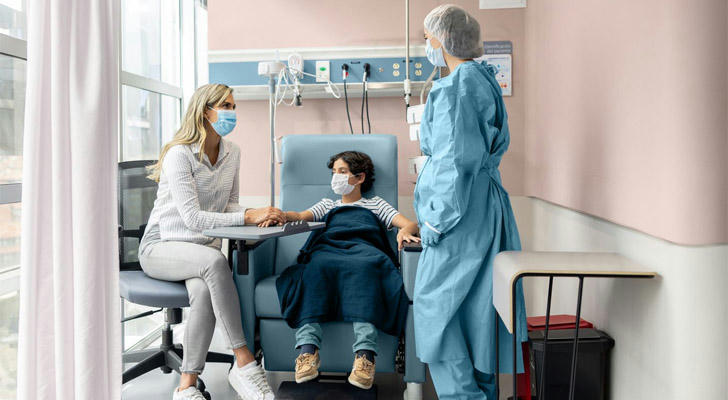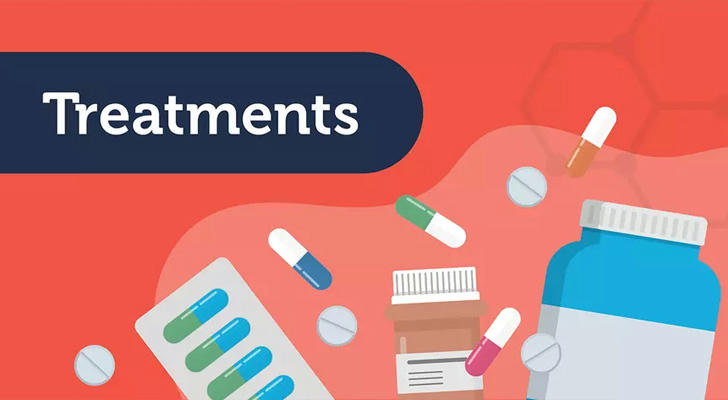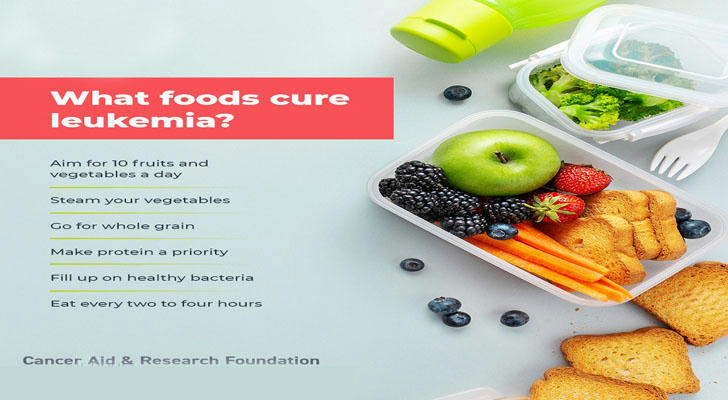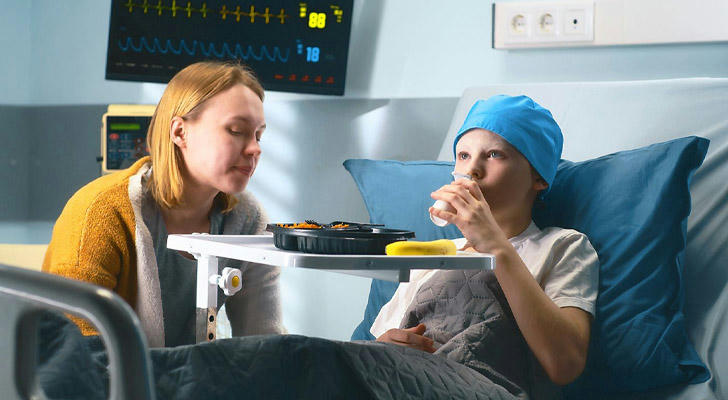The Latest Breakthrough In Leukemia Treatment In The United States: Cure And Hope Coexist
Leukemia, a cancer that affects the blood and bone marrow, was once considered an almost incurable disease. However, as medical technology continues to advance, especially in the United States, there have been remarkable breakthroughs in the treatment of leukemia. From traditional chemotherapy and bone marrow transplantation to the latest immunotherapy, gene therapy and food therapy, the treatment of leukemia has now become more personalized, precise and effective. There is growing evidence that certain foods not only enhance immunity but also effectively inhibit the growth and spread of cancer cells. In the United States, scientists and nutritionists have discovered 20 special foods that are rich in antioxidants, anti-inflammatory ingredients and natural compounds that can provide the body with a strong anti-cancer barrier.

Treatment of leukemia
1. Drug therapy
Choices for drug therapy: targeted therapy vs. chemotherapy
Amy's treatment plan mainly includes chemotherapy and targeted drug therapy. Her attending physician, a hematology oncologist in Los Angeles, USA, recommended that she undergo standard chemotherapy treatment combined with targeted therapy drugs to precisely treat the specific mutations in her leukemia cells.
Chemotherapy treatment
Amy's first step in treatment was to receive standard chemotherapy drugs. Chemotherapy drugs enter the body through the blood and kill cancer cells or prevent them from growing. For patients with acute myeloid leukemia, chemotherapy is usually divided into two stages: induction therapy and consolidation therapy. Amy's chemotherapy treatment included several drugs: Cytarabine and Idarubicin. These two drugs can effectively kill rapidly proliferating cancer cells and reduce leukemia symptoms.
During the chemotherapy process, Amy experienced many side effects, such as nausea, vomiting, loss of appetite, and decreased immunity. Her doctor prescribed medications to help relieve these side effects and closely monitored her blood conditions. After the first month of chemotherapy, Amy's leukemia cell count dropped significantly. Although her physical strength recovered slowly, she felt that her condition had improved.

Targeted therapy
In addition to chemotherapy, Amy also began to receive targeted therapy. Targeted therapy is a more precise treatment method that can identify and attack specific mutations or proteins in cancer cells. For patients with acute myeloid leukemia, if their leukemia cells carry certain mutations or markers, targeted drugs can effectively lock and destroy these abnormal cells.
Amy's pathological examination showed that her leukemia cells carried FLT3 mutations, a gene that is often overactive in leukemia cells. In response to this mutation, Amy's doctor chose the targeted drug "Gefitinib" (Midostaurin) for her, which can inhibit the activity of FLT3 mutations, thereby effectively reducing the proliferation of leukemia cells.
While receiving targeted therapy, Amy continued to receive regular blood tests to monitor her leukemia cell count. After several months of treatment, her leukemia cells almost completely disappeared and entered remission.
2. Food therapy
What is "real food therapy"?
“Real food therapy” is a dietary approach that emphasizes improving health by consuming natural, unprocessed whole foods. This therapy advocates focusing on natural, nutrient-rich foods, avoiding processed foods, added sugars, and artificial ingredients to help the body recover, enhance immunity, and even fight cancer. The core concept of real food therapy is to use the natural nutrients of food to support the body's self-healing ability, reduce the chance of disease, and provide a natural auxiliary treatment for cancer patients.
Real food therapy places special emphasis on the following types of food:
Fresh fruits and vegetables: These foods are rich in antioxidants, vitamins, minerals, and fiber, which are essential for strengthening the immune system and inhibiting the growth of cancer cells.
Whole grains and nuts: Whole grains (such as brown rice, oats) and nuts are rich in healthy fats, protein, and fiber, which can provide the body with lasting energy.
Organic protein: Such as wild fish, organic chicken, beans, etc., which help repair tissues and strengthen the immune system.
Plant-based drinks: Such as green tea, ginger tea, etc., these drinks contain a lot of natural antioxidants and anti-inflammatory ingredients, which help fight cancer cells.

3. John's Leukemia Diagnosis and Treatment Journey
John, 38, is a man from Los Angeles, USA. Two years ago, John was diagnosed with chronic lymphocytic leukemia (CLL) during a routine physical examination. This type of leukemia progresses slowly, but still poses a huge challenge to John's life due to its impact on the immune system. The doctor recommended that he undergo conventional treatment options, including chemotherapy and targeted therapy, but John was reluctant to rely entirely on medication. He hoped to minimize side effects and enhance the body's self-healing ability during treatment.
During a consultation with a nutritionist, John learned that "real food therapy" might help him. So he decided to take this natural therapy to assist with surgical treatment and to enhance the health of his body's immune system by adjusting his eating habits.
How John implemented the "real food therapy"
To better support his leukemia treatment, John began to completely change his diet structure and adopt a strict "real food therapy". He mainly made the following adjustments:
Increase the intake of fresh organic fruits and vegetables: John increased the intake of a large amount of fresh vegetables and fruits every day, especially dark green vegetables (such as spinach and kale), and fruits rich in vitamin C and antioxidants (such as blueberries, strawberries, and citrus). These foods are believed to help inhibit the growth of cancer cells and enhance immunity.
Reduce processed foods: John avoids eating processed foods containing artificial colors, spices, sweeteners, and excessive sugar. He realized that these foods would aggravate the inflammatory response in the body and are not conducive to the body's repair process.
Increase anti-cancer foods: Such as cruciferous vegetables rich in sulfides (such as broccoli and cauliflower), and foods with anti-cancer properties such as garlic, ginger, and green tea. These foods can inhibit the proliferation of cancer cells and improve the body's resistance to disease by increasing antioxidants.
Foods rich in high-quality protein: John increased the intake of high-quality protein, mainly from organic chicken, wild fish, beans and nuts. High-quality protein helps repair damaged cells and improve the body's resistance.
Pay attention to nutritional matching at every meal: In order to ensure the body's nutritional needs, John began to plan the food matching of each meal to ensure adequate intake of fiber, healthy fats, vitamins and minerals.

4. Results and effects: John's condition improved
After implementing the "real food therapy", John's body gradually felt rejuvenated and his immune system was significantly strengthened. After several months of chemotherapy, doctors were surprised to find that his leukemia cell count reduced significantly and his condition was better controlled than expected. John's physical and mental state also improved significantly, his skin condition became better, and his quality of life was greatly improved.
5. Summary
In the United States, there are many ways to treat leukemia, and with the advancement of technology, the treatment effect has gradually improved. Advanced treatments such as chemotherapy, targeted therapy, immunotherapy and stem cell transplantation provide hope for cure for many leukemia patients. Although there may be many challenges and side effects during treatment, with timely medical intervention and professional support, many patients are able to recover and continue to live a fulfilling life.
